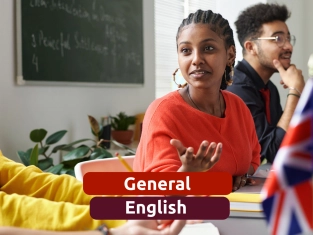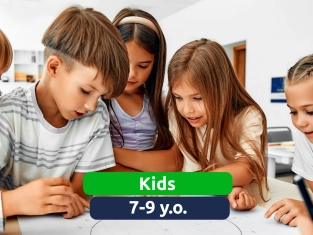by PushtoLearn
English Placement Test for Young Learners
Table of Contents
- English Placement Test for Pre-Teens
- English Placement Test for Young Learners (10-12 years old): Overview and Sample Questions
- Purpose of an English Placement Test for Young Learners
- Structure of the Placement Test
- Sample Questions for Each Section
- Tips for Young Learners Taking a Placement Test
- Other Tests
- FAQ
English Placement Test for Pre-Teens
This test consists of 38 tasks
|
Points (out of 38) |
Percentage |
Level |
CEFR band |
|
0 – 15 |
0 – 40 % |
Beginner |
A1 |
|
16 – 23 |
41 – 62 % |
Elementary |
A2 |
|
24 – 30 |
63 – 79 % |
Pre‑Intermediate |
B1 |
|
31 – 35 |
80 – 92 % |
Intermediate |
B2 |
|
36 – 38 |
93 – 100 % |
Upper‑Intermediate |
C1 |
English Placement Test for Young Learners (10-12 years old): Overview and Sample Questions
An English placement test for young learners, typically ages 10-12, helps assess a child's understanding of basic English skills, including vocabulary, grammar, reading, and sometimes listening and speaking. These tests are designed to be accessible, engaging, and age-appropriate, allowing teachers to place children in the right learning level.

Purpose of an English Placement Test for Young Learners
For young learners, placement tests serve several important purposes:
-
Evaluate Language Skills: Tests measure what children already know in English and where they may need improvement.
-
Determine Class Level: Ensures that students are placed in a level where they can comfortably learn and grow.
-
Boost Confidence: Knowing their skill level helps kids feel confident and motivated to continue learning.
Structure of the Placement Test
The placement test for young learners usually includes sections on:
|
Section |
Focus |
Example Question Type |
|
Vocabulary |
Common words, basic concepts |
Matching words with pictures, choosing the correct word |
|
Grammar |
Basic sentence structure, present and past tense |
Fill-in-the-blank, multiple choice |
|
Reading Comprehension |
Understanding simple texts |
True/false questions, short answers |
|
Listening (Optional) |
Following basic instructions |
Listening and selecting the correct picture |
|
Speaking (Optional) |
Basic questions about everyday topics |
Answering simple questions aloud |
Sample Questions for Each Section
Here are some example questions that might appear in a placement test for young learners:
Vocabulary
-
Choose the word that matches the picture: (Image of a cat)
-
a) Dog
-
b) Cat
-
c) Bird
-
Complete the sentence with the correct word:
“I like to eat ___ in the morning.” -
a) milk
-
b) toast
-
c) shirt
Grammar
-
Choose the correct form of the verb:
“He ___ soccer every Saturday.” -
a) plays
-
b) play
-
c) played
-
Fill in the blank:
“They ___ at the park yesterday.” -
a) is
-
b) was
-
c) were
Reading Comprehension
-
Read the following short passage and answer the question:
Lily loves going to the library on weekends. She reads books about animals and sometimes borrows them to read at home. Her favorite book is about dolphins. -
Where does Lily go on weekends?
-
a) School
-
b) Library
-
c) Zoo
-
True or False:
Lily’s favorite book is about lions. -
a) True
-
b) False
Listening (Optional)
-
Listen to the sentence and choose the correct picture:
Instruction: Listen to “The boy is eating an apple” and select the picture that shows a boy eating an apple.
Speaking (Optional)
-
Answer the following question aloud: “What is your favorite food, and why do you like it?”
Tips for Young Learners Taking a Placement Test
-
Review Common Words: Familiarize with everyday vocabulary, such as objects, animals, and food.
-
Practice Simple Sentences: Understand basic sentences and how to describe actions (e.g., "I play," "She likes").
-
Read Short Stories: Read simple stories to get used to basic English sentence structure and vocabulary.
-
Practice Listening to English: Listen to simple stories or instructions in English to improve listening comprehension.
-
Stay Calm and Take Your Time: Encourage kids to relax and do their best without worrying about making mistakes.
Other Tests
We offer a range of specialized language tests to meet the needs of different learners:
-
Test Your English: A quick and easy assessment for learners of all levels to check their English proficiency.
-
Placement Test for Teens: Designed for teenagers, this test evaluates their grammar, vocabulary, and overall understanding.
-
Test Your Business English: Tailored for professionals to evaluate their skills in business-related English.
-
Placement Test for Kids: A fun and interactive way to determine the starting level for younger children.
FAQ
What is the main goal of a placement test for young learners?
To determine the child’s current English level and place them in an appropriate class where they can improve and learn comfortably.
How long does a placement test for young learners take?
Typically, the test takes 20-30 minutes, depending on whether it includes all sections or just a few.
What should a child study to prepare for a placement test?
Reviewing basic vocabulary, simple sentences, and reading short English texts are helpful ways to prepare.
Can the test be taken online?
Yes, many language schools and programs offer online placement tests that are interactive and include visuals for younger learners.
What levels are available after the placement test?
Levels generally range from beginner to intermediate, allowing children to start at a level that matches their understanding.

